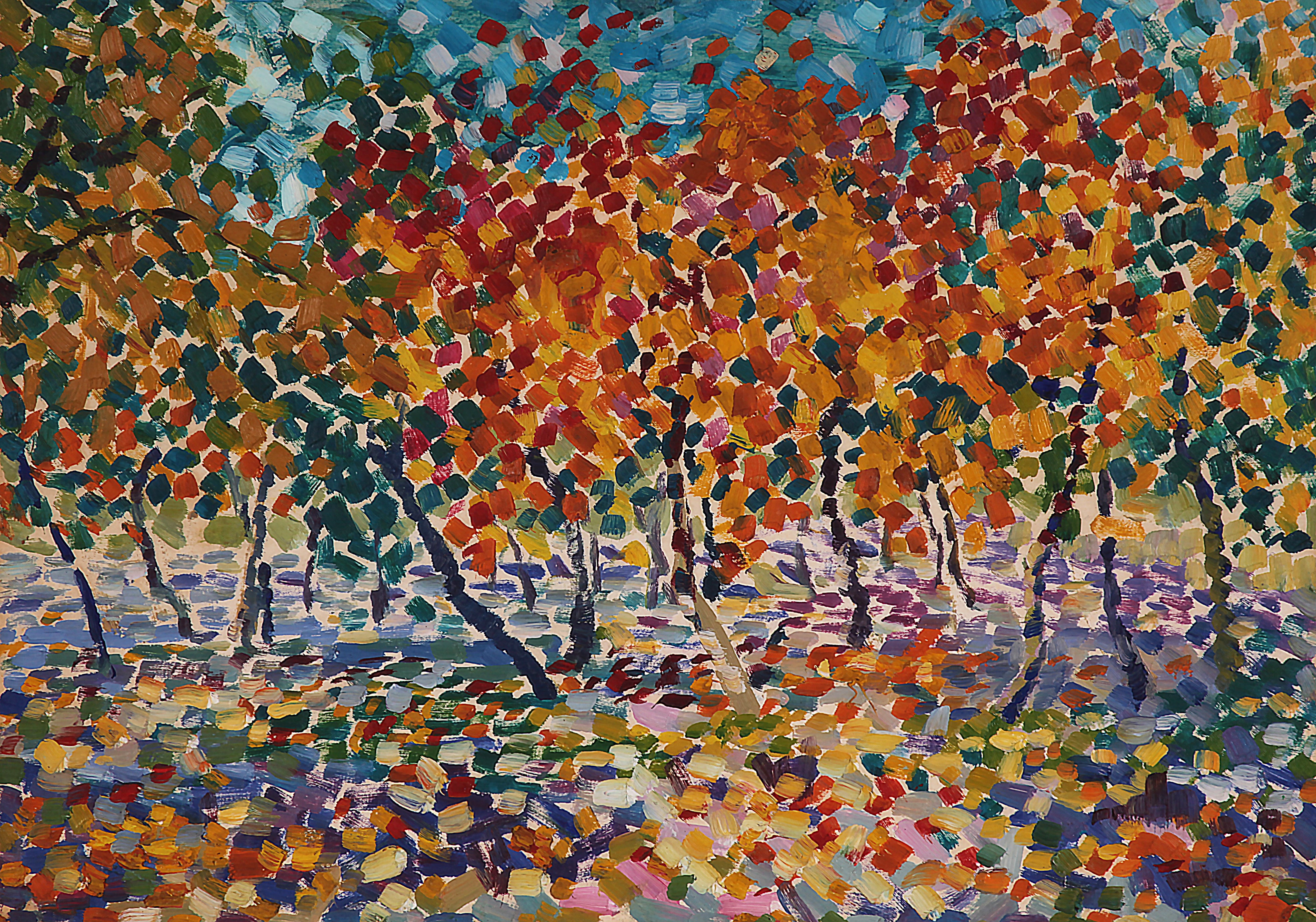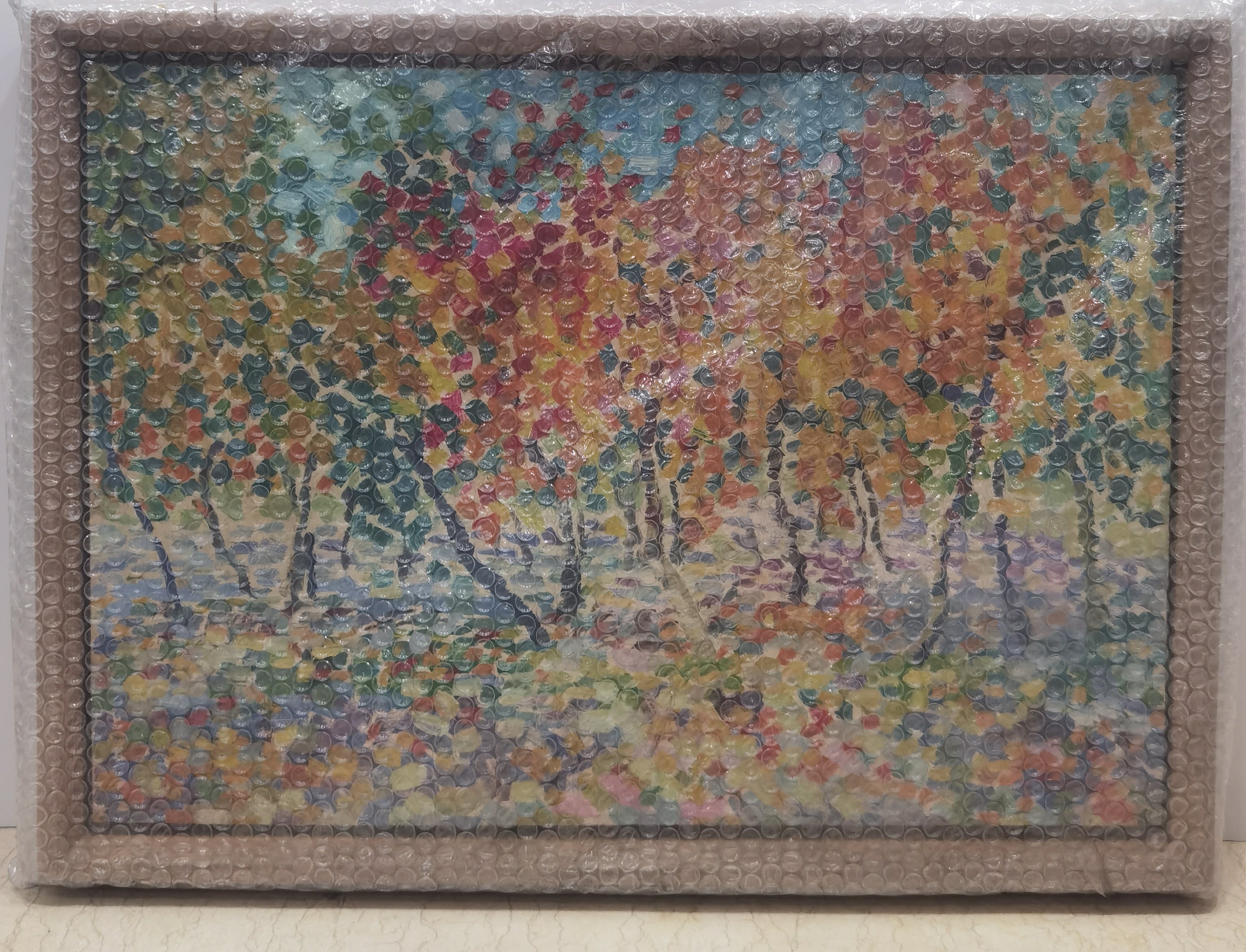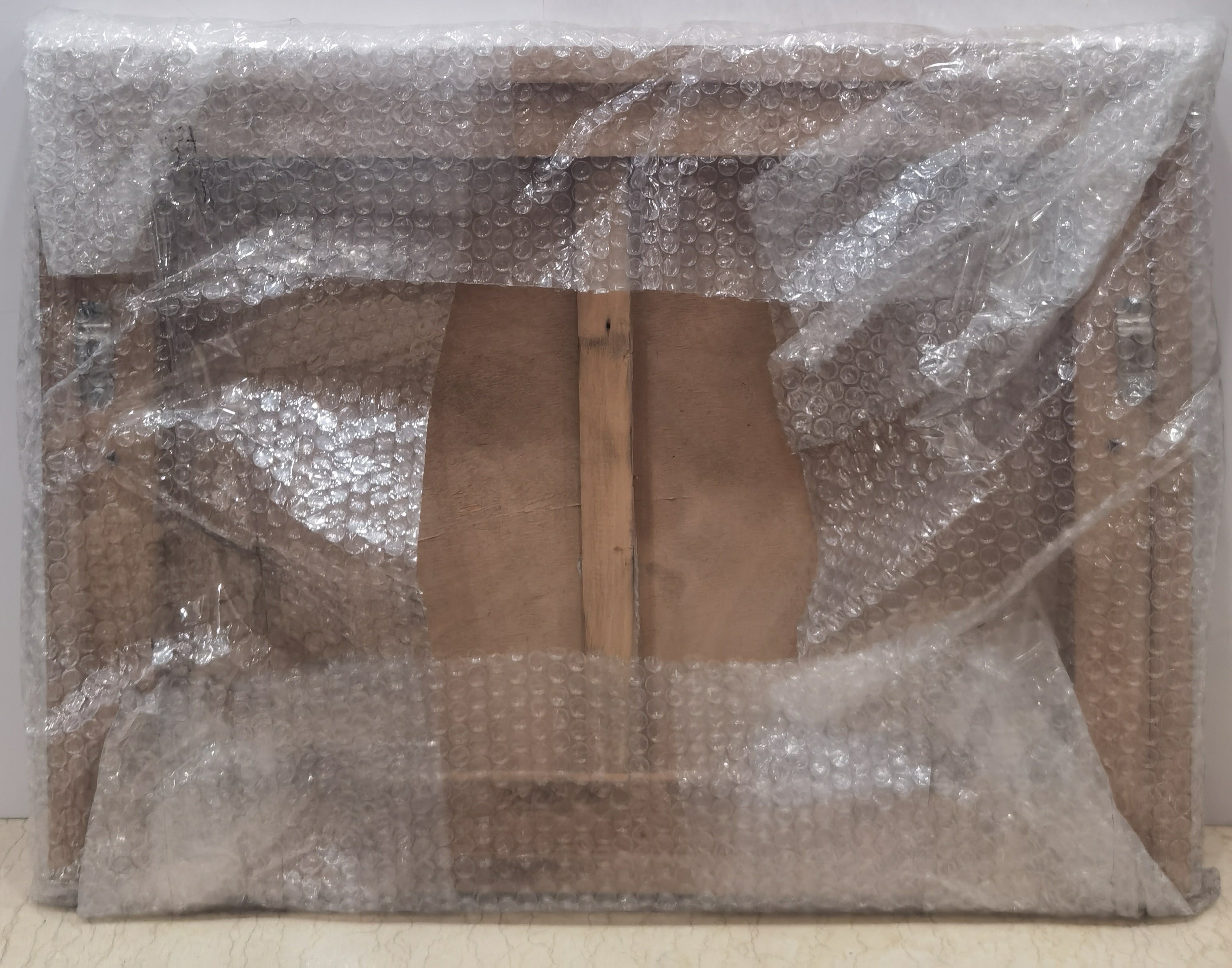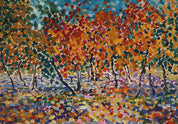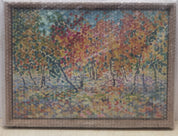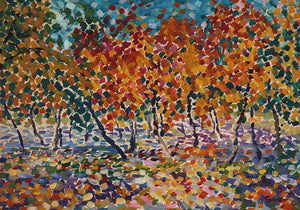Sketching 30
Feng Guodong
Artwork Details
Artwork Description
Title: Sketching 30
Artist: Feng Guodong (馮國東)
Date: n.d.
Medium: Oil on canvas
Dimensions: 21.3 x 15.0 in (54 x 38 cm)
1. Artwork Identification:
Sketching 30 is a vibrant and expressive landscape executed in thick dabs of oil paint, depicting a grove of trees alive with autumnal energy. The composition buzzes with dynamic color relationships and rhythmic brushstrokes, evoking a sun-drenched forest floor dappled in falling leaves and filtered light. The scene is abstracted yet rooted in observation, suggestive of plein-air spontaneity.
2. Artistic Style and Influences:
Feng Guodong's style draws deeply from the Impressionist and Post-Impressionist traditions, particularly the Pointillist and Divisionist approaches of artists such as Georges Seurat and Paul Signac. Rather than blending pigments on the palette, Feng lays down discrete, unblended strokes of color to activate optical mixtures and convey movement. His painterly freedom and vivid palette are a statement of personal liberation, countering the staid realism promoted during the Cultural Revolution.
3. Historical Context:
Feng emerged during the 85 New Wave Movement, a pivotal period in Chinese contemporary art that sought new forms of expression outside the bounds of Socialist Realism. His training at the Beijing Working People’s Culture Palace and involvement in the Beijing Oil Painting Research Association placed him at the heart of this transformation. Sketching 30 reflects both the experimental zeal of that time and Feng’s personal resistance to ideological conformity.
4. Provenance:
Provenance documentation can be provided upon contact.
5. Condition and Conservation:
The painting is in very good condition. The impasto layers are stable, with no visible areas of flaking or damage. The canvas remains taut and secure.
6. Artistic Significance:
Feng Guodong’s work stands as a colorful assertion of artistic independence during a time of significant political restraint. Sketching 30, with its luminous, gestural surface, serves not only as a meditation on nature but also as an emblem of the artist’s pursuit of aesthetic and personal freedom. His contributions to the development of Chinese modernism—bridging Eastern tradition and Western technique—continue to resonate in the canon of post-Mao avant-garde art.

